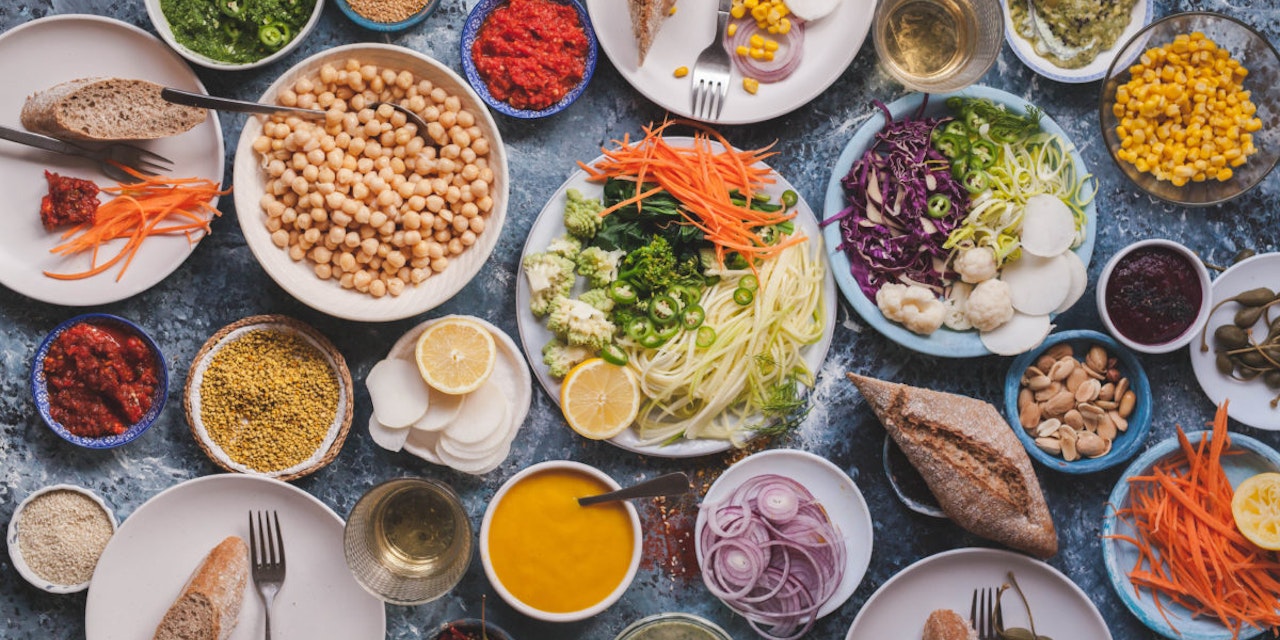How to hit your macro split on a plant-based diet
Enough protein on a plant-based lifestyle? You can easily hit healthy macro levels while eating more nutritious plants.
- Published: 9/8/2023
- Categories:
- 3 min. read

- Published: 9/8/2023
- Categories:
- 3 min. read
You’re adapting a more plant-based lifestyle but heard it may be hard to get enough protein. You can easily hit healthy macro levels while eating more nutritious plants. Learn how to hit your macro split on a plant-based diet and enjoy a recipe made for both.
Macro focused plant-based diet benefits
Before diving into how to hit your macro split on a plant-based diet, let’s explore why both are important for our health.
Why macros matter
Macronutrients (macros) include carbohydrates, protein, and fat that we get from the foods or drinks we consume. Each contributes calories, giving our body energy to function and thrive. Each macro serves its own purpose, keeping our body stay healthy and strong, such as:
- Carbohydrates: preferred source of energy for our brain. Fiber from whole carb sources promotes a healthy gut (1).
- Fat: energy storage, cell health, protects organs, and helps absorb some vitamins.
- Protein: builds and repairs tissues and muscles and maintains our body structure.
In order to reduce our risk of disease and early death, the Dietary Guidelines for Americans recommends that the average adult gets about 45 to 65 percent of calories from carbohydrates, 20 to 35 percent from fat, and 10 to 35 percent from protein (2).
Perks of plant-based
Plant-based diets emphasize whole foods and limit meat, dairy, eggs and refined or processed foods. Research shows that plant-based diets reduce the need for medication and help treat chronic disease (3). They are also associated with lower weight, and better blood pressure, cholesterol, and blood sugar levels.
Plant-based foods are rich in fiber, which feeds our healthy gut bacteria. It also keeps things moving through our digestive tract, keeping us regular and reducing the risk of certain cancers (4). Plants are also powerful sources of vitamins and minerals, benefiting our immune system, skin, eyes, and more.
Here are some healthy examples of plant-based foods for each macronutrient:
- Carbohydrates: whole wheat bread or pasta, oats, quinoa, brown rice, fruits, vegetables.
- Fat: avocado, coconut, olives, seeds, plant-based oils.
- Protein: lentils, beans, chickpeas, tofu, nuts.
How to hit your macro split on a plant-based diet
Let’s break down the nitty gritty of how you can hit your macro goal on a plant-based diet. Keep in mind this is specific so if you’re just looking to balance your diet, focus on a blend of the plant-based macronutrient food sources above.
In order to figure out how many grams of each macro to have each day, start with your calorie goal. Considering the recommendation from the Dietary Guidelines for Americans, we’ll focus on 50 percent carbs, 20 percent protein, and 30 percent fat. Carbs and protein have 4 calories per gram while fat is 9 calories per gram. So say for instance you’re aiming for 2000 calories of plant-based calories per day. First break that down by percentages:
- Carbohydrates (50%): 1000
- Fat (30%): 600
- Protein (20%): 400
Then divide by the number of calories per gram:
- Carbohydrates (1000/4): 250g per day
- Fat (600/9): 67g per day
- Protein (400/4): 100g per day
This can get confusing and tedious, which is why using a macro tracking and plant-based app like Lifesum is a great way to go! You can adjust macros to the exact amount you’re aiming for in the app. Plus you’ll get access to recipes that support you in reaching these goals such as this delicious Fried tofu and rice recipe.
Fried tofu and rice
INGREDIENTS
- 5.3 oz/150 grams tofu
- ⅓ cup (dry) white rice
- 1 clove garlic
- 1 tablespoon soy sauce
- ¼ teaspoon ground black pepper
- 1 tablespoon nutritional yeast
- ½ cup edamame
- ½ tablespoon canola oil
- ½ small yellow onion
- ¼ teaspoon salt
INSTRUCTIONS
- Cook the rice according to the instructions on the packaging.
- Finely chop the onion and garlic.
- Fry the onion and garlic in oil in a non-stick frying pan.
- Add the edamame beans, tofu, and rice.
- Fry for a few more minutes.
- Add nutritional yeast and soy sauce.
- Season with salt and pepper.
- Tip! Garnish with cilantro and fresh chili.
4 references (hide)
All of the content and media on Lifesum is created and published for information purposes only. It is not intended to be used as a substitute for medical advice or treatment. Users should always consult with a doctor or other health care professional for medical advice. If you have or think you are at risk of developing an eating disorder, do not use the Lifesum app and seek immediate medical help.